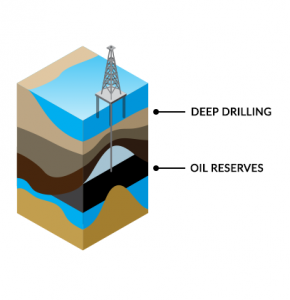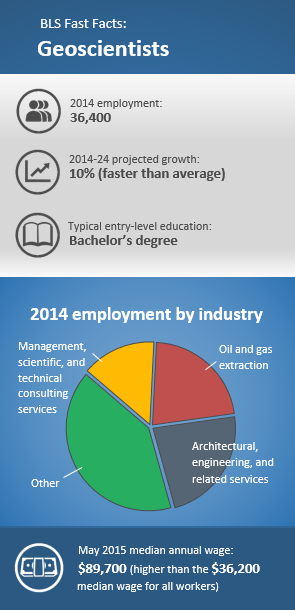All Categories
Featured
Table of Contents
- – What Can I Do With A Major In Geophysics? in ...
- – Greeley-evans Area 3d Geophysical Survey in ...
- – Geophysical Surveys in Myaree WA 2020
- – Geophysicist Salary And Job Description 202...
- – Geophysical Survey And Remote Sensing Techn...
- – Geophysicist Job Description in West Perth...
- – What Is A Geophysicist? in East Cannington...
- – Geophysical Survey Next Step In Carbon Sto...
- – Geophysical And Geotechnical Assessment in...
- – Marine Geophysicist - Explore The Seafloor...
What Can I Do With A Major In Geophysics? in Koongamia WA 2021
What is the task description of a Geophysicist? What are the duties and responsibilities of a Geophysicist? What does a Geophysicist do? A geophysicist research studies physical elements of the earth and uses complex equipment to collect data on earthquakes and seismic waves, which move through and around the earth. The very best industries for geophysicists are the mining and oil industries, as they play a huge part in the acquisition of natural deposits.
This Geophysicist task description example consists of the list of crucial Geophysicist duties and duties as revealed below. It can be modified to fit the particular Geophysicist profile you're trying to fill as a recruiter or job candidate.
Profession chances differ extensively throughout a variety of fields consisting of geophysical data, environment modelling, engineering geology, hydrology, mining, environmental consulting, natural deposits exploration, agriculture, and others. There are many career courses that can combine your academic backgrounds, abilities, and experience with your various interests. Check out through the job titles listed below for concepts.
Greeley-evans Area 3d Geophysical Survey in Swan View Western Australia 2020
Go to the National Occupational Category website to research study fundamental requirements and responsibilities of jobs in your field.
Geophysics plays in important function in many aspects of civil engineering, petroleum engineering, mechanical engineering, and mining engineering, along with mathematics, physics, geology, chemistry, hydrology, and computer technology. Students in other majors may consider a minor in geophysical engineering. The core courses required for a minor are: GPGN229, Mathematical Geophysics (3.
0 credits) GPGN329, Physics of the Earth II (3. 0 credits) Students may please the staying 5 hours with a mix of other geophysics courses, as well as courses in geology, mathematics, or computer science, depending on the trainee's major.
Geophysical Surveys in Myaree WA 2020

The salary level of geophysicists can differ depending upon elements such as their level of education, their level of experience, where they work, and numerous others. According to the 2018 Alberta Wage and Wage Study, Albertans working in the occupational group earn a typical wage of per year. According to Work, BC (the Province of British Columbia), the annual provincial typical wage of B.C.

Geophysicists can work both indoors, in a workplace or lab environment, or outdoors while performing fieldwork. Fieldwork can include being exposed to a range of weather, and potentially dangerous scenarios, depending upon their area of expertise of the geophysicist. Some geophysicists may also spend long periods of time working in little teams in remote areas.
When conducting fieldwork, the working hours of geophysicists can be long and include evenings, weekends and vacations. To become a competent geophysicist, you need to posses a specific set of skills and personality traits. These skills and characteristics will enable you to successfully carry out the tasks of your job, along with maintain a favorable mindset towards your work.
Geophysicist Salary And Job Description 2023 in Ascot Oz 2021
Institution of higher learnings Federal, provincial/state federal government departments Oil, gas and mining companies Non-profit companies Geological and geophysical consulting business Public and private research study companies Our task board listed below has "Geophysicist" posts in Canada, the United States, the UK and Australia, when readily available:.
Our data indicates that the highest pay for a Geophysicist is $165k/ year Our information suggests that the least expensive pay for a Geophysicist is $55k/ year Increasing your pay as a Geophysicist is possible in different methods. Modification of company: Think about a profession relocation to a brand-new employer that is ready to pay greater for your abilities.
Handling Experience: If you are a Geophysicist that oversees more junior Geophysicists, this experience can increase the probability to earn more.
Geophysical Survey And Remote Sensing Techniques in Beaconsfield Aus 2022
Physics of the Earth and its vicinity Age of the sea floor. Much of the dating info comes from magnetic abnormalities. Geophysics () is a subject of natural science worried about the physical procedures and physical homes of the Earth and its surrounding space environment, and the use of quantitative techniques for their analysis.
Geophysics is applied to social needs, such as mineral resources, mitigation of natural threats and ecological defense. In expedition geophysics, geophysical survey data are utilized to examine potential petroleum reservoirs and mineral deposits, find groundwater, discover historical antiques, identify the density of glaciers and soils, and assess sites for environmental removal. To supply a clearer concept of what makes up geophysics, this section explains phenomena that are studied in physics and how they connect to the Earth and its environments. Geophysicists likewise investigate the physical procedures and homes of the Earth, its fluid layers, and electromagnetic field together with the near-Earth environment in the Planetary system, that includes other planetary bodies.
The gravitational pull of the Moon and Sun triggers 2 high tides and 2 low tides every lunar day, or every 24 hr and 50 minutes. There is a space of 12 hours and 25 minutes in between every high tide and in between every low tide. Gravitational forces make rocks push down on deeper rocks, increasing their density as the depth boosts.
Geophysicist Job Description in West Perth WA 2020
The geoid would be the worldwide mean sea level if the oceans were in balance and might be extended through the continents (such as with very narrow canals).
If the waves originate from a localized source such as an earthquake or surge, measurements at more than one location can be used to locate the source. The places of earthquakes offer information on plate tectonics and mantle convection. Recording of seismic waves from controlled sources supplies details on the area that the waves travel through.
An existing of about 1800 amperes circulations in the international circuit. It flows downward from the ionosphere over most of the Earth and back upwards through thunderstorms. The circulation appears by lightning listed below the clouds and sprites above. A variety of electric techniques are utilized in geophysical study. Some procedure spontaneous potential, a potential that develops in the ground due to the fact that of manufactured or natural disturbances.
What Is A Geophysicist? in East Cannington Oz 2022
In the extremely conductive liquid iron of the outer core, magnetic fields are created by electrical currents through electromagnetic induction.
In the core, they probably have little observable effect on the Earth's magnetic field, but slower waves such as magnetic Rossby waves may be one source of geomagnetic nonreligious variation. Electro-magnetic techniques that are used for geophysical study consist of short-term electromagnetics, magnetotellurics, surface area nuclear magnetic resonance and electromagnetic seabed logging. These geomagnetic turnarounds, evaluated within a Geomagnetic Polarity Time Scale, consist of 184 polarity periods in the last 83 million years, with modification in frequency over time, with the most recent brief total turnaround of the Laschamp event taking place 41,000 years earlier during the last glacial duration. Geologists observed geomagnetic reversal recorded in volcanic rocks, through magnetostratigraphy correlation (see natural remanent magnetization) and their signature can be viewed as parallel direct magnetic abnormality stripes on the seafloor. , powering the geodynamo and plate tectonics.
Geophysical Survey Next Step In Carbon Storage Study in Samson Aus 2023
Radioactive aspects are utilized for radiometric dating, the primary technique for developing an absolute time scale in geochronology. Unsteady isotopes decay at foreseeable rates, and the decay rates of different isotopes cover a number of orders of magnitude, so radioactive decay can be utilized to properly date both recent events and occasions in past geologic ages.
Fluid movements take place in the magnetosphere, atmosphere, ocean, mantle and core. Even the mantle, though it has an enormous viscosity, flows like a fluid over long period of time periods. This flow is shown in phenomena such as isostasy, post-glacial rebound and mantle plumes. The mantle circulation drives plate tectonics and the flow in the Earth's core drives the geodynamo.
Water is an extremely complex compound and its unique homes are important for life.
Geophysical And Geotechnical Assessment in Ashfield Western Australia 2023
The Earth is approximately spherical, however it bulges towards the Equator, so it is roughly in the shape of an ellipsoid (see Earth ellipsoid). This bulge is due to its rotation and is almost consistent with an Earth in hydrostatic equilibrium. The comprehensive shape of the Earth, however, is likewise impacted by the distribution of continents and ocean basins, and to some degree by the characteristics of the plates.
Proof from seismology, heat flow at the surface area, and mineral physics is combined with the Earth's mass and moment of inertia to infer designs of the Earth's interior its composition, density, temperature, pressure. The Earth's mean specific gravity (5. 515) is far greater than the typical specific gravity of rocks at the surface (2.
3), implying that the much deeper material is denser. This is likewise indicated by its low moment of inertia (0. 33 M R2, compared to 0. 4 M R2 for a sphere of continuous density). However, some of the density boost is compression under the massive pressures inside the Earth.
Marine Geophysicist - Explore The Seafloor in Doubleview Western Australia 2023
The conclusion is that pressure alone can not account for the boost in density. Instead, we understand that the Earth's core is composed of an alloy of iron and other minerals. Restorations of seismic waves in the deep interior of the Earth show that there are no S-waves in the outer core.
The external core is liquid, and the motion of this extremely conductive fluid produces the Earth's field. Earth's inner core, nevertheless, is strong since of the enormous pressure. Reconstruction of seismic reflections in the deep interior shows some significant discontinuities in seismic velocities that demarcate the significant zones of the Earth: inner core, external core, mantle, lithosphere and crust.
Table of Contents
- – What Can I Do With A Major In Geophysics? in ...
- – Greeley-evans Area 3d Geophysical Survey in ...
- – Geophysical Surveys in Myaree WA 2020
- – Geophysicist Salary And Job Description 202...
- – Geophysical Survey And Remote Sensing Techn...
- – Geophysicist Job Description in West Perth...
- – What Is A Geophysicist? in East Cannington...
- – Geophysical Survey Next Step In Carbon Sto...
- – Geophysical And Geotechnical Assessment in...
- – Marine Geophysicist - Explore The Seafloor...
Latest Posts
Airborne Geophysical Survey in Hocking Aus 2023
Geophysical Survey Services - Geophysical Test Methods in Karrinyup Australia 2020
Geophysicist: Job Description, Duties And Requirements in The Vines Aus 2020
More
Latest Posts
Airborne Geophysical Survey in Hocking Aus 2023
Geophysical Survey Services - Geophysical Test Methods in Karrinyup Australia 2020
Geophysicist: Job Description, Duties And Requirements in The Vines Aus 2020